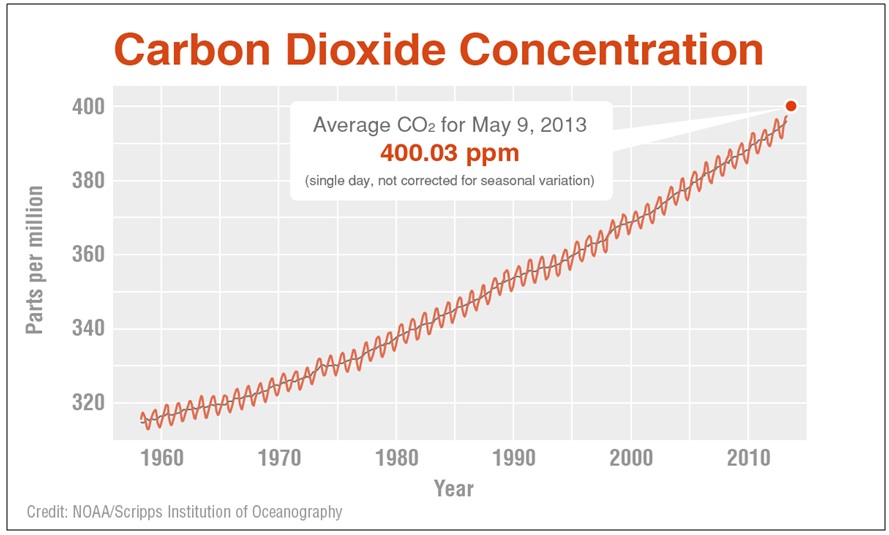We did it, and it’s nothing to cheer about.
The world hit the “sobering milestone” of 400 parts per million (ppm) of CO2 on Thursday — a first in human history — marking “a moment of symbolic significance on road of idiocy” the world has chosen, as well as a call for urgent climate action.
Reaching this threshold level represents a global failure to address the runaway greenhouse gas emissions; as Al Gore wrote today, it shows “we are reaping the consequences of our recklessness.”
Hitting 400 ppm “symbolizes that so far we have failed miserably in tackling this problem,” Pieter P. Tans, who runs the monitoring program at the National Oceanic and Atmospheric Administration, told the New York Times.
And if you’re experiencing a sense of doom that we’ve reached a level of CO2 the Earth hasn’t seen for at least three million years, you’re not alone.
“It feels like the inevitable march toward disaster,” Maureen E. Raymo, a Columbia University earth scientist, warned.
At the Guardian, George Monbiot slams the 400 ppm mark as “a moment of symbolic significance on road of idiocy.” The problem is the overarching power of fossil fuel companies, he writes.
The problem is simply stated: the power of the fossil fuel companies is too great. Among those who seek and obtain high office are people characterised by a complete absence of empathy or scruples, who will take money or instructions from any corporation or billionaire who offers them, and then defend those interests against the current and future prospects of humanity.
This new climate milestone reflects a profound failure of politics, in whichdemocracy has quietly been supplanted by plutocracy. Without a widespread reform of campaign finance, lobbying and influence-peddling and the systematic corruption they promote, our chances of preventing climate breakdown are close to zero.
So here stands our political class at a waystation along the road of idiocy, apparently determined only to complete the journey.
Climate change movement 350.org, which has campaigned around 350 ppm being the safe upper limit for atmospheric CO2, created a website to reflect on what this alarming new milestone means, and how we can move forward.
On the site, Payal Parekh, coordinator for Global Power Shift, calls “Crossing the 400 ppm threshold […] a somber reminder that we haven’t taken the action we need. Nevertheless there is good reason for hope — activists all across the globe are fighting the fossil fuel industry and demanding clean, just and affordable solutions to our energy needs.”
Also urging climate action is 350.org co-founder Bill McKibben, who writes that “The only question now is whether the relentless rise in carbon can be matched by a relentless rise in the activism necessary to stop it.”
If we don’t get off this fast-moving greenhouse gas train, Scripps geochemist Ralph Keeling warned weeks ago, we’re on track to “hit 450 ppm within a few decades.”
Andrea Germanos is a staff writer with Common Dreams, where this article originally appeared. It is reprinted here with permission.



